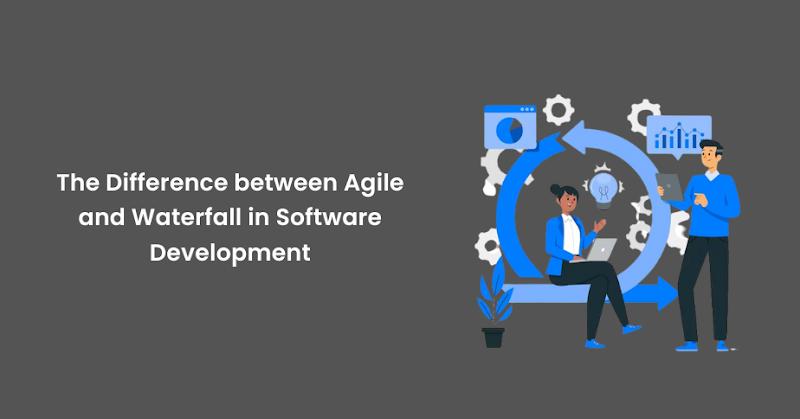Two significant techniques have evolved as popular ways for project management in software development: Agile and Waterfall. Each technique represents a unique approach to project management, with its concepts and practises. Agile Certification provides professionals with the information and abilities they need to succeed in Agile project management. This blog will look at the fundamental distinctions between Agile vs Waterfall in software development to better grasp their distinct qualities and benefits.
Table of contents
- Agile Methodology
- Waterfall Methodology
- Agile vs Waterfall: A Comparative Analysis
- The Importance of Agile Certification
- Conclusion
Agile Methodology
Let’s look into Agile Methodology:
- Agile project management takes an iterative and incremental approach. Instead of preparing the full project in advance, Agile divides it into smaller, manageable iterations known as sprints. Each sprint produces a potentially shippable product increment, allowing continual feedback and improvement.
- Agile encourages change and invites stakeholder feedback. It enables teams to modify project requirements and priorities in response to client wants and market conditions, resulting in a highly adaptive and flexible development process.
- Throughout the development lifecycle, Agile places a significant focus on customer collaboration. Regular customer input ensures that the final product is in line with the client’s vision and needs.
- Agile teams are cross-functional, including people with a variety of skill sets. This variety allows team members to collaborate and share information more effectively.
- Agile teams hold daily stand-up meetings to synchronise activities, share progress, and resolve roadblocks or issues. These brief, concentrated sessions foster openness and responsibility.
Waterfall Methodology
Let’s look into Waterfall Methodology:
- Waterfall project management takes a linear and sequential approach. Before going on to the project’s next step, each phase, such as planning, analysis, design, development, testing, and deployment, must be accomplished.
- Waterfall projects usually outline all project requirements at the start of the project. After the project has begun, changes to requirements are discouraged since they might cause delays and increased expenditures.
- Waterfall projects entail less client participation since the customer’s role is specified mostly during the requirements-collecting phase.
- Waterfall emphasises thorough documentation at every project stage to provide clear communication and future reference.
- Waterfall prioritises comprehensive testing and quality control before delivering the final product. Testing takes place after the development phase.
Agile vs Waterfall: A Comparative Analysis
Here is the comparison:
- The Waterfall is inflexible and less adaptive to changes once the project begins, whereas Agile is flexible and can handle changes throughout the project.
- Continuous customer participation and input are required to ensure that the final product satisfies consumer expectations. Waterfall, on the other side, may result in a mismatch with client expectations if requirements alter.
- Agile improves project visibility by demonstrating working software regularly during each sprint. The sight of Waterfall is restricted until the final product is completed.
- The iterative structure of Agile enables early risk identification and mitigation, whereas Waterfall may uncover problems later in the development process, resulting in possible delays and rework.
- Agile provides for incremental delivery, making time and cost management easier. Waterfall projects, on the other hand, may face scope creep, posing issues in terms of time and money management.
The Importance of Agile Certification
Agile Certification is becoming increasingly relevant for IT workers as the software development industry embraces Agile practices. Agile Certification provides individuals with the knowledge and abilities to comprehend Agile concepts, processes, and best practices. Certified experts are better prepared to lead Agile projects, encourage team cooperation, and produce high-quality products in short development cycles.
Conclusion
The project’s kind, scope, and needs decide whether Agile or Waterfall methodologies are used. Agile is great for dynamic projects with changing demands because it allows for flexibility, client input, and early risk assessment. Waterfall, on the other hand, may be best suited to projects with well-defined and fixed requirements. Agile Certification provides professionals with the knowledge and abilities necessary to thrive in Agile project management, allowing them to create successful software solutions that meet and exceed customer expectations. Finally, understanding the differences between Agile and Waterfall approaches is crucial for making informed decisions on project management methodologies that will efficiently deliver software solutions in today’s fast-paced and ever-changing IT industry.
